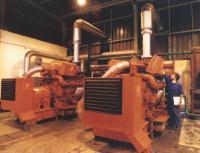Waste to produce energy

The Sasieta Commonwealth celebrates its 10th anniversary this year. It is worth mentioning the creation, together with the Basque Energy Agency (EVE), of the BioSasieta association in Beasain. A power plant for domestic use will be launched from the gas emitted by the zarama, mainly methane.
In the area there are two other plants producing electricity from waste, BioSanMarcos in Gipuzkoa and BioArtigas in Bizkaia. It is a renewable and interesting energy. The fermentation of organic waste generates methane. By law they are required to collect this methane in landfills. So, if you can transform energy, better. The electricity produced by Biosasieta will be sold to the grid in accordance with the Royal Decree on the production of electric energy through renewable energies in the Special Regime. It will approach the garbage of 30 municipalities as a source of biogas. Basically, BioSasieta will use the same system as BioArtigas.
From the breath
But what is biogas? Much of the waste is organic matter, food waste, etc. When this matter accumulates, for example in landfills, an oxygen-free fermentation occurs that results in gases that give off a characteristic smell of garbage. The most abundant are methane, nitrogen, carbon dioxide and oxygen. Other components of biogas are sulfur acid, toluene and other hazardous compounds. The main components will be detected by sensors and the information will be sent to computers through optical fiber.
It is not a complex process. Gas suction is carried out from extraction wells. The amount of oxygen and the amount of methane are first analyzed. When there are large quantities it does not redirect everything to engines. The surplus, however, burns in the torch before its emission into the atmosphere. In fact, methane pouring is limited by law because it produces a greenhouse effect.
For engines to last long, biogas must be dried. That is the next step. The gas passes through a dehumidification facility. In this installation the gas cools up to 20ºC. Then the drops are separated and the gas is heated again at 50ºC. From here the gas is filtered and transferred to continuously operating motor alternators to generate electricity.
The BioSasieta plant will initially have a single engine, but over the years new equipment will be incorporated. Now, at least, we have a beginning and a desire in this commonwealth of Beasain. But renewable energies demand the collaboration of all. For example, in order for biogas to be profitable, it will be necessary to make a distribution of the types of waste more accurate than that offered by our custom. Therefore, the challenge is everyone's.
Buletina
Bidali zure helbide elektronikoa eta jaso asteroko buletina zure sarrera-ontzian











